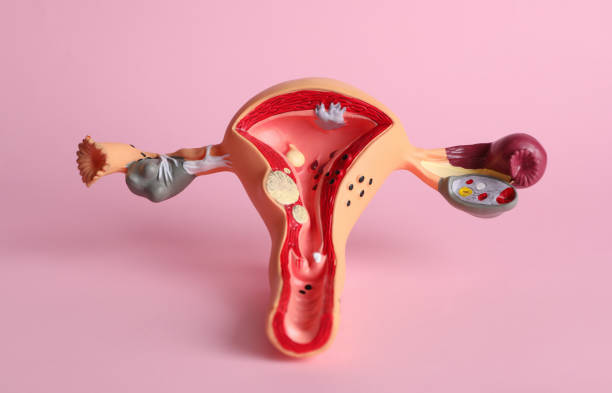Secondary Infertility: Causes and Management
It is understood that infertility can be a problem, especially when it is unexpected. It can also bring about a range of challenging emotional reactions like confusion, frustration, guilt, and in some cases even hopelessness. In this article, we will explore secondary infertility, its causes, and its possible management.
What is Secondary Infertility?
Secondary infertility happens when a woman cannot get pregnant or carry a baby to term after they have previously been pregnant and had a baby with no issues. Secondary infertility shares many of the same origins as primary infertility. To classify infertility as secondary, the previous birth must have occurred without any help from any fertility medication or treatments like IVF. Healthcare providers will also typically diagnose secondary infertility after the couple has been trying to get pregnant for some time, usually six months to a year. Secondary infertility is as common as primary infertility, and it may be caused by a problem in one or more of the following steps:
- Ovulation
- Fertilization
- Travel of fertilized egg into the uterus
- Implantation

It is also important to note that some male factors can contribute to secondary infertility. The conditions all revolve around problems in the sperm cells and issues with sperm not moving the right way. It can also arise from risk factors that revolve around age, weight, lifestyle habits, and the use of certain medications.
What are the causes of secondary infertility in females?
Primary and secondary infertility usually share the same causes or origin. Some of the most common causes of infertility which also relates to secondary infertility include:
- Issues with the uterus or fallopian tubes – These can be termed structural problems, and they may prove to be a barrier to achieving conception. For example, if there is a blockage to the continuity of the fallopian tube, it may prove a barrier to the mixing of sperm cells and the egg. This may also apply to the uterus. Some specific conditions that may affect both structures include endometriosis, uterine scaring, polyps or uterine fibroids, or any abnormalities such as the unicorn uterus.
- Ovulation disorders – This accounts for a large number of infertility cases. They can be caused by several conditions like PCOS, primary ovarian insufficiency, endocrine disorders that affect hormone production, aging, lifestyle habits, etc.
- Infections – These can cause issues like pelvic inflammatory disease. They can also lead to scarring and blocking of the fallopian tubes. Some infections may also affect the cervical mucus and reduce the fertility rate as well.
- Age – This plays a role in the fertility of a woman. The biological peak of fertility is around 20 and it begins to decline at around 30 years of age on average. By age 40 there is a very significant reduction in fertility levels. This does not mean that conception at these ages is impossible; it just may be harder and take longer.
- Autoimmune disorders – The relationship between this and infertility is not fully understood. In general, it is believed that autoimmune disorders cause the body to attack itself. This could also involve an attack on the reproductive system causing infertility. Some autoimmune disorders like lupus or rheumatoid arthritis may cause inflammation in the uterus, which may affect fertility.
- Idiopathic reasons – This can be the case sometimes when after a range of tests there is no definite diagnosis for secondary infertility.
How can secondary infertility be managed?
This starts with the identification of the root cause of infertility. This is done after some recommended tests are carried out. Some of the tests include:
- Ovulation tests
- A pelvic examination
- Blood tests aimed at determining the hormone levels
- Imaging tests of the reproductive organs
- A transvaginal ultrasound
- Some other tests like laparoscopic examinations
If after the tests there were no issues detected, it may be suggested that the tests for male infertility should be carried out on the male partner. But if a cause is detected, a treatment plan can then be developed by the doctor to improve the situation and increase the chances of conception.
What are some of the treatments for secondary infertility?
Some of the treatment plans that can be adopted to manage infertility include:
- Medication – These are usually administered in a bid to normalize hormonal issues. In some other cases, fertility medications are used to stimulate ovulation. In the case of infertility that is caused by PCOS, medication may help stimulate the ovulation process in addition to modification of lifestyle habits like quitting bad habits or getting into a more healthy weight.
- Surgery – This can be used in some cases, surgeries can be used to resolve some causes of infertility like removing uterine fibroids, resolving uterine scarring, or advanced endometriosis. Many of these procedures are only minimally invasive.
- Assisted reproductive technology – This may be recommended in some cases; two of the most common ARTs are IVF and intrauterine insemination. Adoption of either of the two methods is dependent on the cause of the secondary infertility. In IUI, sperm is collected and then inserted into the uterus during ovulation. In IVF, the sperm and the woman’s eggs are collected. They are then mixed in a lab to achieve fertilization and to create embryos. The embryo is then implanted into the woman’s uterus to achieve pregnancy.
What is the emotional impact of secondary infertility?
Infertility can be a condition that enacts a high emotional toll on individuals and their partners. In the instance that the treatments fail to work, the couple may suffer from a range of emotions like sadness, grief, disappointments, anger, and even sometimes loneliness. It is even possible that family and friends may not even understand and may tell them to be grateful for the child they already have. Even healthcare providers may even lack sympathy, and this may add to the feeling of isolation. It may be crucial for individuals with secondary infertility and their partners to seek emotional support, and they may benefit from various infertility support groups or mental health professionals.
The information provided in this blog is for educational purposes only and should not be considered as medical advice. It is not intended to replace professional medical consultation, diagnosis, or treatment. Always consult with a qualified healthcare provider before making any decisions regarding your health. Read more







